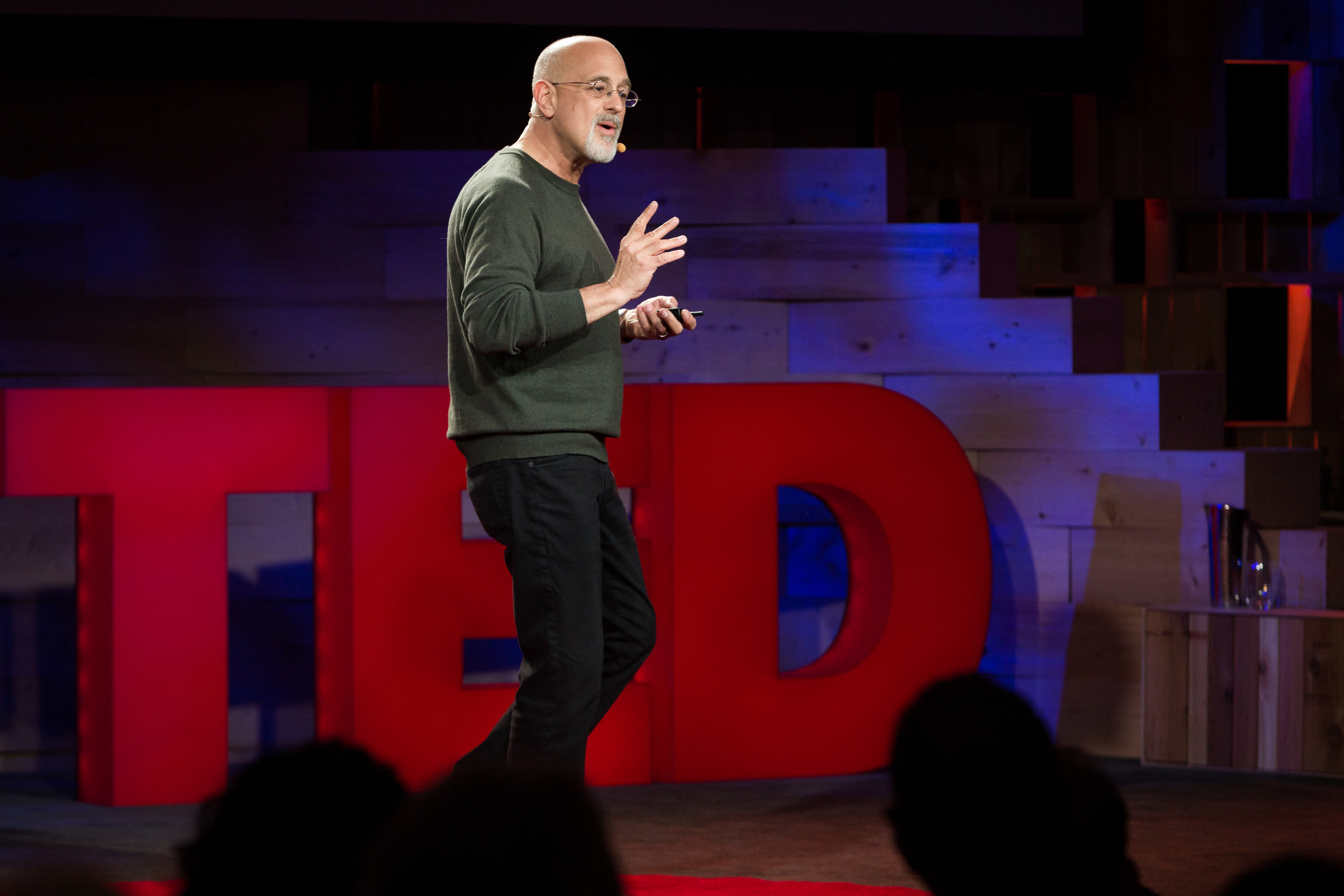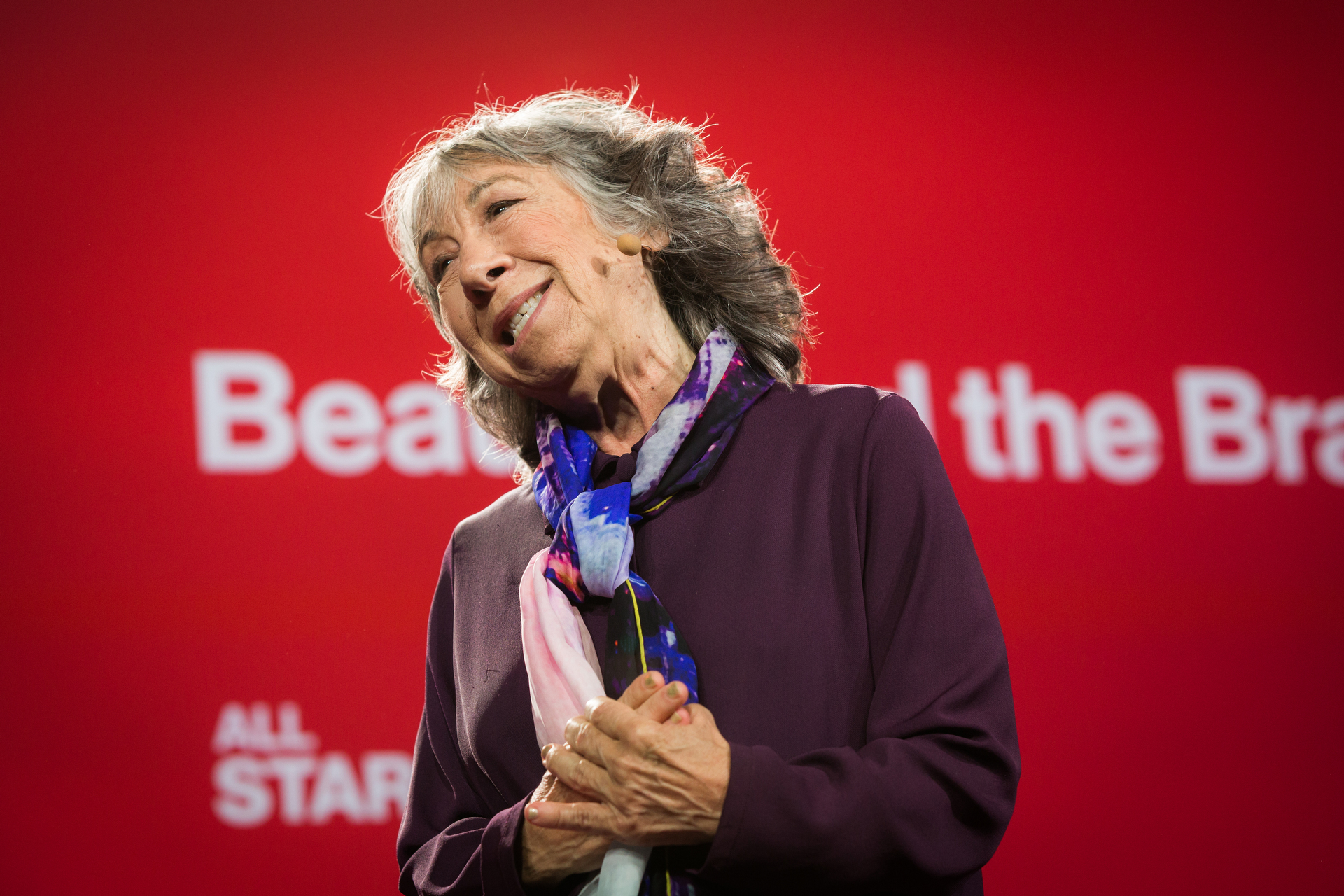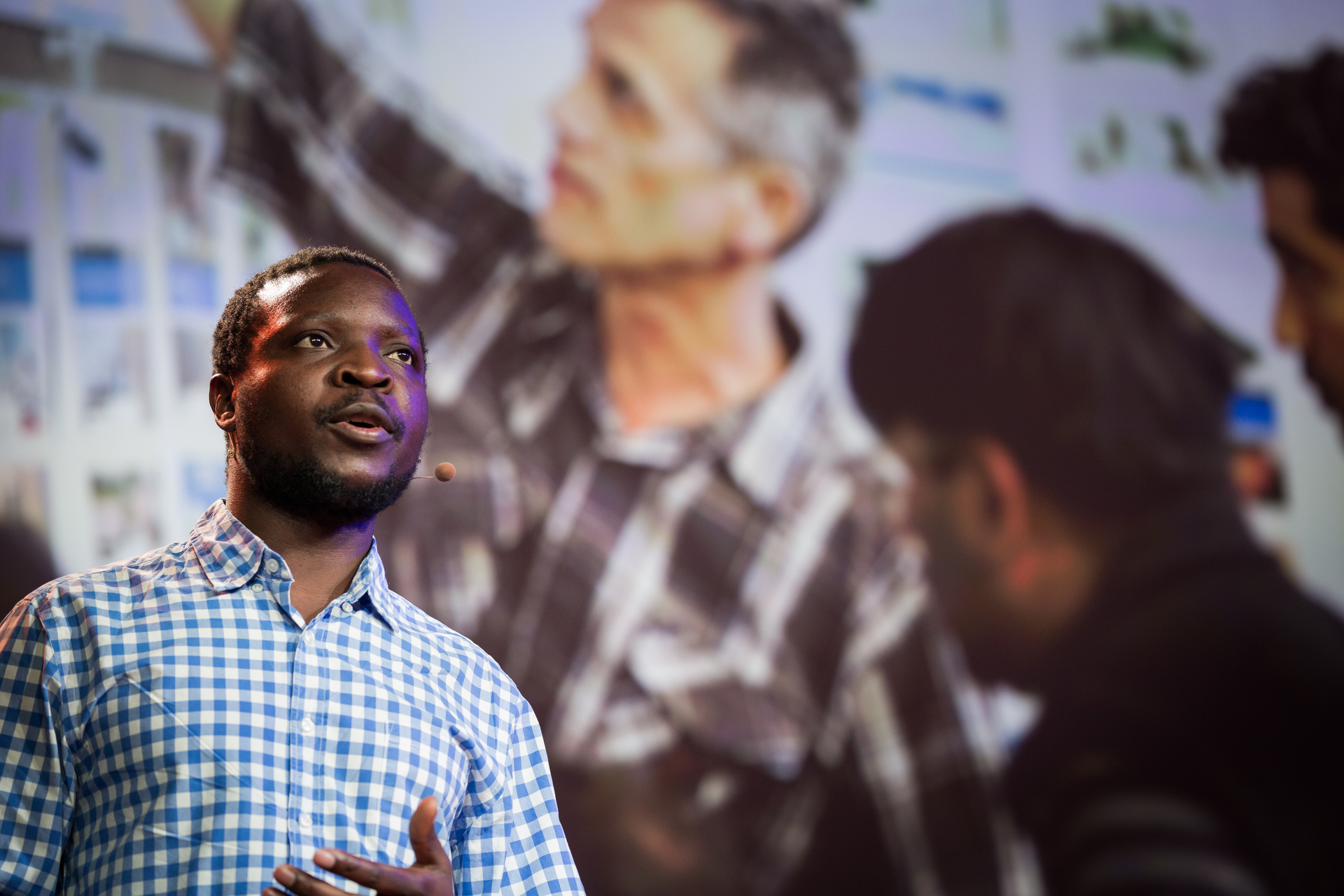By Liz Jacobs and Thu-Huong Ha
Our brains work in mysterious ways. They make us laugh, they make us cry, and sometimes, they make us 19-year old geniuses. The 11 speakers in this All-Stars session specialize in areas of the brain as diverse as personality, trauma and gender, but they all agree: Our minds matter.
Below, read a detailed recap of each talk given in this session:
What if there were one amazing substance that was cheap, had no side effects, reduced stress, boosted creativity—and you couldn’t OD on it? As it happens, there is: Nature. Marine biologist Tierney Thys is interested in the calming, healing effects that images of nature have on the brain. Working with TED speaker Nalini Nadkarni’s team, she’s supplying nature images to an Oregon prison. Preliminary results look promising. If we could understand the effects of seeing nature on the neurological level, she suggests, we could optimize the creation of nature imagery to maximize mental health. That’s why she’s working on another project to measure EEG in response to beautiful nature photography. It’s a new discipline she calls neurobiophilia.
Why do we make decisions that our future selves so often regret? Happiness psychologist Dan Gilbert is interested in how much our personality, preferences and values change over the course of a lifetime. It’s a theme Gilbert has discussed in his previous talks on happiness and decision-making, but his new research shows that while we think we are the person we will always be, we actually change quite a lot over the course of our lifetime, even into old age. The only constant in life is change — even when it comes to ourselves.
At TEDGlobal 2012, Jane McGonigal gave a talk about her game SuperBetter, which helped her recover from a severe brain injury. Since then she has become obsessed with how games can help people’s mental health. She offers four recent examples of the power of gaming:
- SnowWorld: This is a 3D virtual reality game that has be able to reduce pain in severe burn cases by 30 to 50 percent, making it more effective than morphine;
- Tetris: Oxford psychologists showed that playing Tetris directly following a trauma blocks the brain from forming visual memories. By hijacking the visual processing center of the brain, Tetris can help with PTSD;
- Project Tree: This is a game in which players use chain saws to cut down a tree and experience haptic feedback. After playing the game for two minutes subjects showed they would change their behavior for one week, using 25 percent fewer paper products.
- SuperBetter: In a recent University of Pennsylvania control trial, McGonical’s own SuperBetter was able to reduce 6 symptoms of depression in 6 weeks of play.
In 2008, physicist and education activist Neil Turok wished to find the next Einstein in Africa. Since winning the TED Prize, Turok has made incredible strides connecting Africa’s young scientists with the best lecturers in the world. At his African Institute for Mathematical Sciences, which now has four centers across the continent and a fifth opening later this year, students have found incredible resources and support to pursue their mathematical dreams. Turok is joined on the stage with two of his students, Kidist Zeleke and Martial Mbah, who are applying their math and science foundation to cutting-edge research in physics and medicine.
After Emily Levine gave her kooky TED2002 talk, she was diagnosed with a brain tumor. Says Levine, “It has brought me in touch with reality.” She was producing too much human growth hormone; she broke her leg; it was only three months ago that she started walking again. And yet. There was only one thing for the self-labeled “brainiac comedian” to do: make a movie. She gives a preview of her new film, Emily @ the Edge of Chaos: A Movie About Change.
Psychologist Phillip Zimbardo is worried about men. He sees them failing socially, academically and with women — and he’s had these concerns since he talked about the demise of guys back in 2011. In the three years since, he hasn’t seen much improvement in the male condition; now, he pinpoints the causes on missing fathers and overexposure to video games. It will take a village — mothers and fathers, government programs, healthcare and school curriculum redesigns — to refine masculinity and remind men to get back into the real world.
In a Q&A with session host Guy Raz, 19-year-old Taylor Wilson talks about the progress of his small nuclear fission reactors. And he’s close — says Wilson, it’s no longer a physics problem, just a manufacturing problem. Wilson says his reactors are five to 10 years from market, and as little as three years from prototype. Distributed generation is the future, he says, because it’s more efficient and reliable, and renewables are pro-distribution. The goal is micro: for every city, town and house to have its own generator. The only thing that’s needed now, says Taylor, is base load power. Raz points out that Taylor decided not to go to college to start his own company; has that been hard? Says Taylor, it was a difficult decision, but science really allows him to stay a kid forever. And don’t worry, he still goes to parties.
When neuroanatomist Jill Bolte Taylor had a massive stroke, her life changed forever. She transitioned from being a left-brained scientist to a right-brained person more in touch with her emotions, and those of others. She had no idea when she shared her story on the TED stage back in 2008 that 15 million people would watch her talk. Since then, she’s founded Jill Bolte Taylor BRAINS, a nonprofit that promotes brain awareness and appreciation. And she’s learned to harness her strengths as a right-brained person: it’s influenced her teaching style and her outlook on life. “Our first job as human beings is to love one another and come into the world through compassion, love and openness,” she says. “TED has changed my life and helped me become the person I am today.” A standing O from a teary crowd.
William Kamkwamba, aka “the boy who harnessed the wind,” spoke at TEDGlobal 2007 about the windmill he built in his village in Malawai as a fourteen-year-old. Today he is back at TED to talk about his educational journey since then. Says Kamkwamba, at the time he was forced to drop out of school because his parents couldn’t afford his school fees. Following his talk, generous supporters helped him go back to school, this time in South Africa. Now, 7 years, 11 weeks, and 2 days after giving his first talk, Kamkwamba is about to graduate from Dartmouth College. He still devotes much of his time to helping his community, installing solar panels and computers in the school he was forced to leave; starting a soccer team for his village; running a minivan transport business; installing solar water pumps; and of course sharing his skills and knowledge with the community so they can work on their own projects.



Comments (5)
Pingback: The Power of Nature | aleisha frazer photography
Pingback: Communing With Nature – StdGod
Pingback: Communing With Nature | Communing With Nature | Social Dashboard
Pingback: Communing With Nature | Omaha Sun Times
Pingback: Like Abs | Communing With Nature